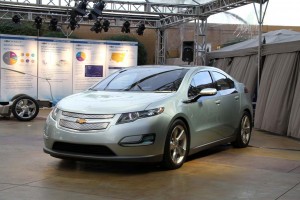
The first production versions of the Chevrolet Volt - a prototype is shown here - will go to California.
The first cars off the line will be heading to California, late next year, when General Motors begins production of the 2011 Chevrolet Volt plug-in hybrid.
Other markets will follow in a planned nationwide roll-out, the automaker will announce, later today, at the Los Angeles Auto Show.
“It is natural that California is the lead market for Volt. Not only is it the largest automotive market, Californians are known to be leaders in adopting groundbreaking new technologies,” said Brent Dewar, GM vice president, Global Chevrolet Brand.
There’s yet another reason why Volt will premier in the Golden State and not, say, Michigan or even New York. The plug-in – GM actually prefers the term, “Extended-Range Electric Vehicle,” or E-REV – uses new lithium-ion batteries, a technology particularly sensitive to temperature variations.
“Lithium batteries like the same temperatures we do,” noted Volt project manager Tony Posawatz, about 70 degrees Fahrenheit. Much warmer or colder and a special climate control system kicks in, eating up some of the battery pack’s energy – and reducing its promised 40-mile range in electric mode.
During today’s LA Auto Show news conference, GM officials will also announce that they have signed up three California utilities as partners, as well as the Electric Power Research Institute (EPRI). They will cooperate on what the maker describes as “an extended, real-world demonstration and research program to introduce customers to electric vehicles, advance vehicle electrification and establish vehicle charging programs.”
While GM has been working hard to keep the Volt in the public spotlight, the automaker has declined to reveal at least one key detail: its price. That won’t be announced until shortly before the E-REV goes on sale, but it’s expected to come in around $40,000 – before consumers can take advantage of a $7,500 federal tax credit.
In a separate report, yesterday, TheDetroitBureau.com revealed that GM has all but totally ruled out a novel approach some competitors will take with their own battery programs, selling their vehicles and then leasing the batteries separately at a monthly price equivalent to what an average motorist would spend on gasoline.
But Dewar told TDB that at some point, Chevy might offer consumers a choice of different battery pack options, increasing their range on electric power for an additional fee, much like today’s buyers can increase performance, say, by upgrading from a V6 to a V8.
